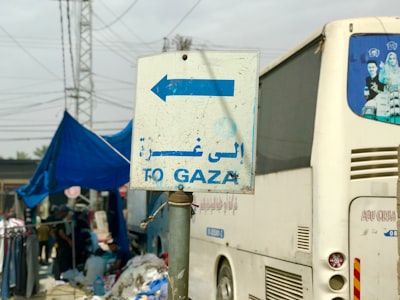Navigating Aid Distribution in Gaza: Security, Ethics, and Human Rights Concerns
The delivery of humanitarian aid to Gaza continues to dominate headlines, raising urgent questions about the ethics, security, and effectiveness of distribution methods amid ongoing conflict. As international outcry grows over reports of violence against Palestinians at aid distribution sites, people are searching for answers: How are humanitarian corridors established in conflict zones? What protections exist for aid recipients? And what systems can balance security with the fundamental need for food and medicine?
Gaza Aid Distributions: A System Under Scrutiny
With Israel and the US backing new aid distribution sites in Gaza, the intention has been to direct critical resources to civilians while purportedly bypassing control by armed groups like Hamas. However, the system is widely criticized for requiring people to traverse combat zones and forming crowded, high-tension checkpoints.
Allegations of Abuse and Use of Force
Recent BBC reports, citing former contractors, describe alleged incidents where security guards fired on unarmed civilians—including women and children—at Gaza Humanitarian Foundation (GHF) sites. Claims of use of machine guns, lack of clear engagement protocols, and a culture of impunity have ignited debate over accountability in humanitarian operations. GHF has categorically denied these allegations, but mounting calls for investigations and even shutdowns signal a crisis of confidence.
Commonly Searched Questions: Humanitarian Aid in Warzones
People frequently ask:
- How do humanitarian agencies ensure safety at aid distribution sites?
- What is a humanitarian corridor, and how is it enforced?
- Are international organizations monitoring human rights abuses in real-time?
- What is the difference between UN-controlled and military-backed aid?
- How can civilians safely access aid in active war zones?
Humanitarian Corridors: Safety or Risk?
Humanitarian corridors are designed to provide safe passage for aid delivery and recipients, but in the context of Gaza, these routes often intersect with combat zones, placing vulnerable populations at risk. Under international law, all parties must protect civilians, but enforcement remains problematic.
The Debate: Securing Aid vs. Protecting Civilians
Israel’s perspective: The need for tight controls is justified as a means to prevent aid from reaching Hamas.
Critics’ perspective: Restrictions and militarized controls allegedly fuel more harm, as reflected in hundreds of reported civilian deaths and injuries at aid sites.
Humanitarian outlook: Over 170 NGOs—including Oxfam and Save the Children—have condemned the current system, demanding safer, more accountable aid mechanisms.
Ethical Dilemmas for Aid Organizations and Contractors
Key ethical questions include:
- How to train and supervise contractors to avoid escalation?
- What oversight mechanisms can detect and deter misuse of force?
- When does humanitarian access get compromised by military priorities?
What’s Next for Gaza and International Aid?
With the war ongoing, solutions could include:
- Third-party monitoring by the UN or neutral agencies.
- More distribution sites to reduce chokepoints.
- Greater transparency—publishing real-time data on casualties at aid points.
- Technological solutions (drones, CCTV transparency) for independent review.
FAQ
Q: Are aid workers ever prosecuted for violence against civilians? A: In rare cases, but prosecution is difficult without independent evidence or international pressure.
Q: Why are humanitarian corridors sometimes unsafe? A: Corridors often cross active conflict areas, and security protocols may be unclear or inconsistently enforced.
Q: How can civilians in Gaza know where it’s safe to get aid? A: Aid organizations publish information, but rapidly changing frontlines make this challenging.
Conclusion: Reimagining Humanitarian Aid in Conflict Zones
The controversy over Gaza's aid distribution shines a harsh light on the moral and logistical dilemmas of delivering life-saving aid in warzones. Tackling these challenges requires transparent oversight, stronger protections for civilians, and global advocacy to ensure that humanitarian efforts do not exacerbate suffering. For those seeking to make sense of evolving headlines, understanding the interplay of security, accountability, and ethics is essential.
For in-depth resources on humanitarian principles and current events in Gaza, see Human Rights Watch, OCHA Gaza Situation Reports, and BBC News Middle East.

Comments
No comments yet. Be the first to comment!